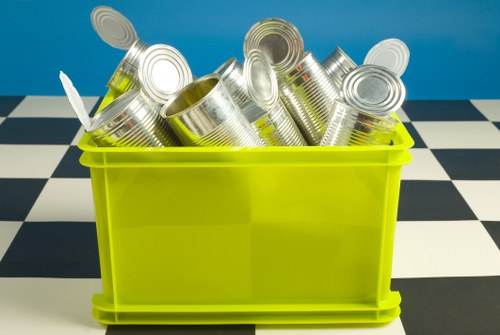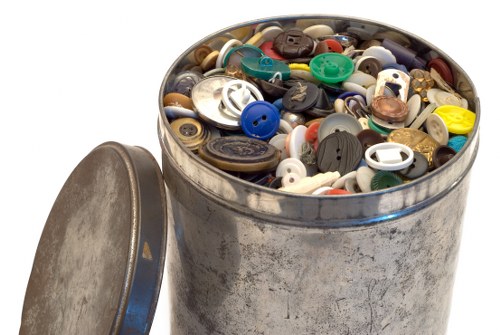Garden Clearance Reading
Introduction to Garden Clearance

Garden clearance in Reading is an essential service for homeowners looking to maintain a beautiful and functional outdoor space. Whether you're preparing for a new garden design or simply tidying up, professional garden clearance can make a significant difference.
Clearing your garden removes unwanted debris, dead plants, and overgrown areas, creating a fresh canvas for new growth. It also helps prevent pests and diseases from taking hold, ensuring your garden remains healthy and vibrant.
Understanding the process and benefits of garden clearance can help you make informed decisions about maintaining your outdoor area.
Why Garden Clearance Matters

Garden clearance is more than just cleaning up; it's about creating a safe and enjoyable environment. Overgrown plants and cluttered spaces can pose safety risks, especially for families with children or elderly members.
Regular garden clearance helps in maintaining the structural integrity of your property by preventing damage caused by invasive species and unchecked plant growth. It also enhances the overall appearance of your garden, making it a pleasant place to relax and entertain.
Moreover, a well-maintained garden can increase your property's value, making it a wise investment in the long run.
Benefits of Professional Garden Clearance

Hiring a professional garden clearance service in Reading offers numerous advantages. Professionals bring expertise and experience, ensuring that the job is done efficiently and effectively.
They have access to the right tools and equipment, allowing them to handle even the most challenging clearance tasks. This not only saves you time but also reduces the physical strain associated with manual clearing.
Additionally, professionals are knowledgeable about local plant species and environmental regulations, ensuring that your garden clearance is both effective and compliant.
Steps Involved in Garden Clearance
Understanding the steps involved in garden clearance can help you plan and prepare for the process. Here are the typical stages:
- Assessment: A professional will assess the current state of your garden, identifying areas that need attention.
- Planning: Based on the assessment, a clear plan is developed outlining the tasks to be performed.
- Removal: Unwanted plants, debris, and structures are removed carefully to prevent damage to desirable areas.
- Pruning and Trimming: Overgrown plants are pruned and trimmed to encourage healthy growth and maintain the garden's shape.
- Disposal: All cleared materials are disposed of responsibly, often recycled or composted.
Tools and Equipment Needed
Professional garden clearance requires specific tools and equipment to ensure the job is done efficiently:
- Pruners and shears for trimming plants
- Chainsaws for larger branches
- Rakes and shovels for debris removal
- Wheelbarrows for transporting materials
- Protective gear to ensure safety
Common Challenges and Solutions

Garden clearance can present several challenges, such as dealing with stubborn weeds or accessing hard-to-reach areas. Professionals are trained to handle these obstacles effectively.
Another common challenge is managing waste disposal. Professionals have the means to dispose of garden waste responsibly, minimizing environmental impact.
Additionally, they can navigate any local regulations regarding garden clearance, ensuring that your garden remains compliant with local laws.
Environmental Considerations
When clearing your garden, it's important to consider the environmental impact. Professionals prioritize sustainable practices, such as composting organic waste and recycling materials whenever possible.
Avoiding the use of harmful chemicals during the clearance process is also crucial for maintaining a healthy garden ecosystem. This approach ensures that your garden remains a safe habitat for beneficial insects and wildlife.
By choosing eco-friendly garden clearance services in Reading, you contribute to the preservation of the local environment.
Cost of Garden Clearance in Reading

The cost of garden clearance in Reading can vary based on several factors, including the size of your garden, the extent of the clearance required, and the specific services you need.
On average, garden clearance services may charge per hour or offer a fixed price for the entire project. It's advisable to obtain multiple quotes to compare prices and services offered.
Investing in professional garden clearance can save you money in the long run by preventing potential damage and increasing the longevity of your garden.
Choosing the Right Garden Clearance Service
Selecting the right garden clearance service in Reading involves considering several key factors:
- Experience: Look for companies with a proven track record and positive customer reviews.
- Licensing and Insurance: Ensure that the service is properly licensed and insured to protect against any potential liabilities.
- Services Offered: Choose a service that offers a comprehensive range of clearance options tailored to your specific needs.
- Environmental Practices: Opt for companies that prioritize sustainable and eco-friendly clearance methods.
- Cost: Compare pricing to find a service that offers good value without compromising on quality.
Local Relevance: Garden Clearance Areas Near Reading
Garden clearance services are available in various areas surrounding Reading, each offering unique benefits:
- Wokingham: Just a short drive from Reading, Wokingham offers lush gardens perfect for clearance and redesign.
- Earley: Known for its community parks, Earley is a great area for maintaining public and private gardens.
- Tilehurst: Tilehurst residents benefit from extensive garden spaces that require regular clearance.
- Sonning: With its picturesque settings, Sonning gardens need careful clearance to preserve their beauty.
- Woodley: Woodley offers both residential and commercial garden clearance services to suit diverse needs.
- Finchampstead: Finchampstead's large gardens are ideal for comprehensive clearance projects.
- Emmer Green: Emmer Green combines traditional and modern gardens, requiring specialized clearance techniques.
- Shinfield: Shinfield's spacious gardens are perfect for extensive clearance and landscaping.
- Charvil: Charvil offers serene garden spaces that benefit from regular professional clearance.
- Tilehurst: Another area with abundant green spaces, Tilehurst is ideal for thorough garden clearance.
- Kennet: Kennet's community gardens require dedicated clearance services to maintain their appeal.
- Crowthorne: Crowthorne's historic gardens often need specialized clearance to preserve their character.
- Earley: A hub for garden enthusiasts, Earley offers various services tailored to garden clearance needs.
- Brightwell: Brightwell's charming gardens benefit from regular professional clearance and maintenance.
Frequently Asked Questions
1. What is garden clearance?
Answer: Garden clearance involves removing unwanted plants, debris, and clutter from your garden to maintain its health, appearance, and functionality. It can include pruning, trimming, and disposing of waste responsibly.
2. How often should I have my garden cleared?
Answer: The frequency of garden clearance depends on your garden's condition and maintenance level. Generally, a professional clearance once or twice a year is recommended to keep your garden in optimal shape.
3. Can I do garden clearance myself?
Answer: While some minor clearance tasks can be done independently, professional garden clearance ensures that the job is done thoroughly and safely, especially for larger or more complex gardens.
4. What are the costs associated with garden clearance?
Answer: Costs vary based on the size of your garden, the extent of clearance needed, and the services you require. It's best to obtain quotes from multiple providers to find a service that fits your budget.
5. How do professionals dispose of garden waste?
Answer: Professionals typically recycle or compost garden waste, ensuring that it is disposed of in an environmentally friendly manner. They may also handle the removal of larger items that cannot be composted.